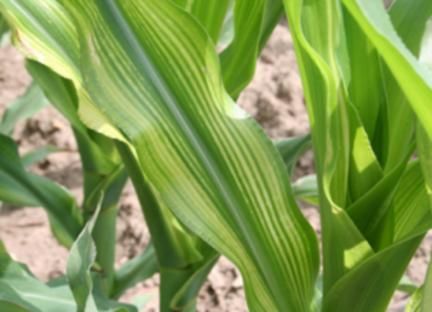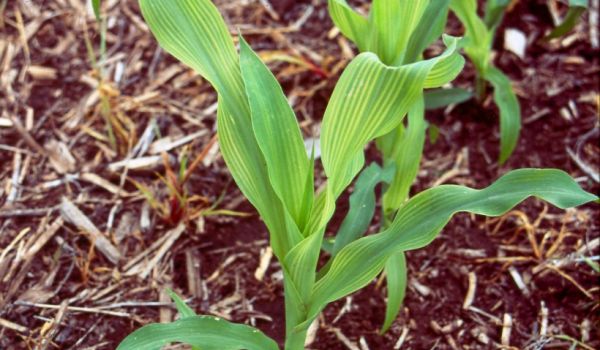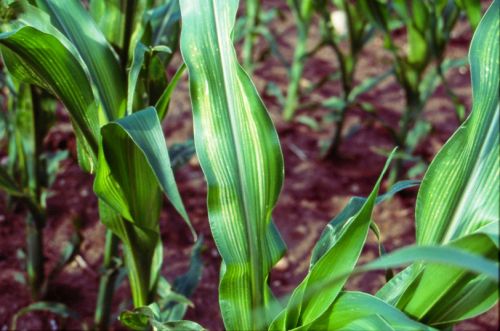“Rich on Agronomy” – Yellow Corn

“Rich on Agronomy” is an occasional agronomy column from PFS Account Manager Rich Larson.
I haven’t seen this much greenISH (heavy on the “ISH”) corn in a long time. This could indicate one of several nutrient deficiencies – nitrogen, sulfur, or zinc. From a distance, these nutrient deficiencies look similar, but it is important to look more closely before taking action.
When I see yellow corn plants, my first thought is nitrogen deficiency due to excess rain this year. Denitrification and leaching are the two major sources of nitrogen loss. If the plants are yellow at the bottom and greener on top, the plant is most likely nitrogen deficient. The greener new leaves represent that the roots are starting to tap the nitrogen. In this scenario, I would recommend side dressing 30-50 pounds of nitrogen prior to the V8 growth stage, or as soon as you can. In V6-V8, the corn plant is determining the girth of the ear, giving added nitrogen the most bang for the buck. Last week, most of our corn was in the V5-V7 stage. Act now if you can to save some yield in areas short of nitrogen.
Side dressing is also recommended for saturated soils. Although deficiencies may not be visible, plant roots are not receiving oxygen in areas of saturation. No oxygen means no growth, which means no nutrient uptake even if nutrients are available. If water stood in saturated areas for a length of time, denitrification probably occurred, and you will need to add nitrogen to those areas.
We’ve also seen a lot of sulfur and zinc deficiencies this year. It is very important to recognize those or your N side dressing may be a big waste of money. It’s fairly easy to determine a sulfur deficiency from a nitrogen deficiency. If the plant is more yellow on top than bottom (the new leaves are yellow), that is mostly likely a sulfur shortage. The leaves are typically striped, as shown in the photo below. Notice there is no striping on the older, lower leaves.
Lastly, zinc deficiency is present this year, too. Zinc deficiencies are generally identified by broad yellow striping on either side of the midrib, as seen in the photo below.
Again, timing is critical to preserve potential yield. You will get a greater return on your supplemental nutrient program when it is applied before the V8 stage. Saving the loss of two rows of kernels on each ear of corn can mean up to 20-30 bushels per acre.





